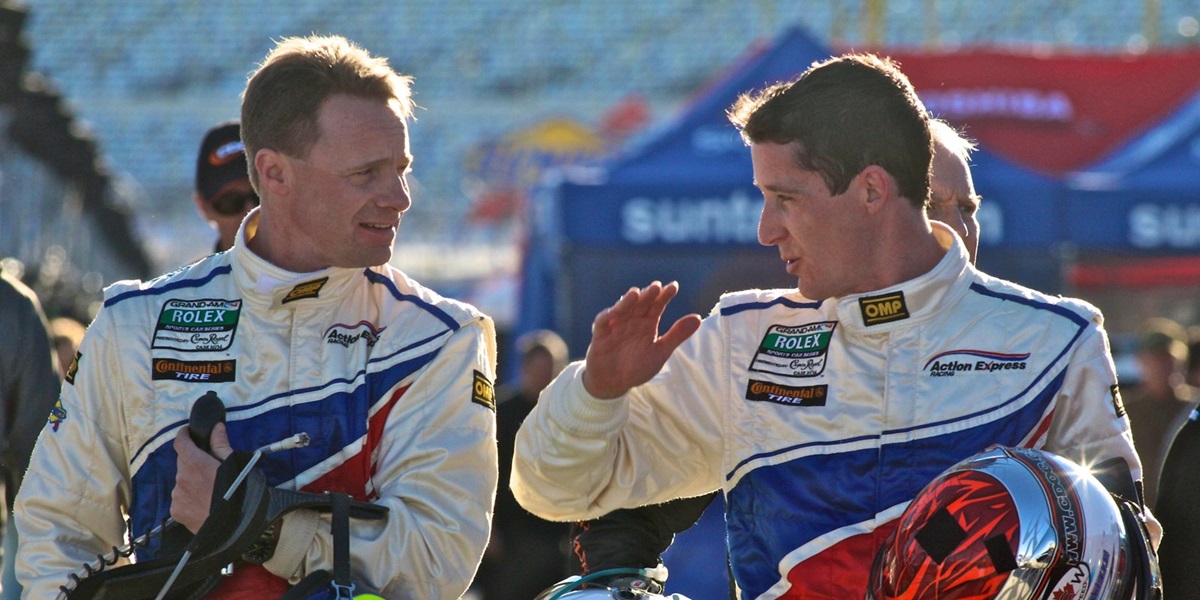
Super Weekend Profile: David Donohue
June 20, 2012 | By John Oreovicz
David Donohue is one of the most versatile road racers in America, yet he can’t escape the shadow of his late father.
Donohue was just five years old when his father, Mark Donohue, won the 1972 Indianapolis 500. Three years later, Mark Donohue died in a crash while practicing for the 1975 Austrian Grand Prix.
So any notion that the Donohue family name and connections are responsible for David’s success is rubbish. Mark Donohue had been gone for nearly 20 years when David began his own racing career, a career that has culminated in his status as one of the most successful competitors in the history of the Daytona Prototype category of the Grand-Am Road Racing Championship.
Donohue was on the grid for the first DP race back in 2003, and he’ll be on the grid at Indianapolis Motor Speedway when the GRAND-AM Series makes its IMS debut as part of the Super Weekend at the Brickyard. He is teamed with Terry Borcheller in the #5 Corvette Daytona Prototype fielded by Action Express Racing.
AXR finished 1-2 in the most recent round of the GRAND-AM Rolex Series, with Darren Law and Joao Barbosa securing the victory over Donohue and Borcheller. Following that race at the Belle Isle circuit in Detroit, Donohue was tied for second in the season point standings.
Donohue has raced an incredible variety of road racing cars over the last twenty years and fostered productive manufacturer relationships with Chrysler and Porsche.
In 1996 and 1997 he starred in the short-lived North American Touring Car Championship run in conjunction with the CART-sanctioned Indy car series. Driving a Dodge Stratus for PacWest Racing with factory support from Chrysler Motorsports, Donohue scored an important debut victory for the program in Chrysler’s back yard at the 1996 Detroit Grand Prix. He went on to win the 1997 NATCC championship.
When the NATCC folded, DaimlerChrysler retained David for its Dodge Viper program for the next three years, resulting in a GT-2 class victory in his first appearance at the 24 Hours of Le Mans, along with six GTS class victories in the American Le Mans Series in 1999 and 2000.
Throughout his career, Donohue occasionally entered in stock car competition, and 2001 saw Donohue run a career-high NASCAR races in the Nationwide and Truck Series. He was back in sports cars, running a Panoz in the ALMS in 2002.
Then came the GRAND-AM era. Established by the France family as a lower-tech, lower cost alternative to the factory developed prototypes in the ALMS, the GRAND-AM Series attracted a diverse group of drivers and manufacturers.
The GRAND-AM Series' signature race is the Rolex 24 at Daytona, and Donohue and his Brumos Racing teammates won the endurance classic in 2009 in the closest finish in the history of major 24-hour automobile races.
Driving the final stint, Donohue held off the charging Chip Ganassi Racing entry driven by NASCAR star Juan Pablo Montoya to prevail by just 0.167 second after 24 hours of racing.
Making the achievement more historically significant, David Donohue’s winning effort came almost 40 years to the day since Mark Donohue won the 1969 Daytona 24 Hours.
“Easily this is the biggest career achievement that I’ve had so far and it’s a nice story line, for sure,” he said. “But to be perfectly honest, my father has been gone for quite some time. Our guys are the ones that have been doing the hard work and putting the effort to win this race.
“I’m certainly very, very proud of my father and his accomplishments and what he’s done,” he added. “Just coincidentally, we happened to nail it on the 40th anniversary of him and Penske winning with the Lola. But I feel more of attachment to the effort my guys have put in to this.”
As one of the veterans of the GRAND-AM Series, Donohue has seen the quality of the Daytona Prototype cars and the level of competition improve over the last decade.
“Everybody thought we were crazy back then, with this brand new concept,” Donohue recalled. “It had never been tried before. We were really starting with a clean slate and I was fortunate enough to be in on the almost the ground floor. I was there when the first car was getting put together and sat in it before the body work was ever created, and I did the early test before the 2003 Rolex 24.
“Here we are today, more than 100 races later, and the series obviously has proven its worth. It’s probably the most competitive road racing series in the country.”
The relatively simple, robust DP cars can withstand the kind of bumping and banging many fans associate with short track stock car racing.
“There is rubbing and some moving around and bumping, but we spend the whole season together, so we don’t want to be just taking each other out of each race because there is too much money and effort wrapped up in this,” Donohue said. “I race against guys the way they race against me. Fortunately for the regulars, we can race clean and hard up front.”
Although this is the first time Daytona Prototypes will compete at Indianapolis, it’s not Donohue’s first time on the IMS road course. He drove a Porsche 911 in the SuperCup race in support of the United States Grand Prix in 2001. However, that utilized the original IMS road course design, which ran in the opposite direction to the current layout that debuted in 2008.